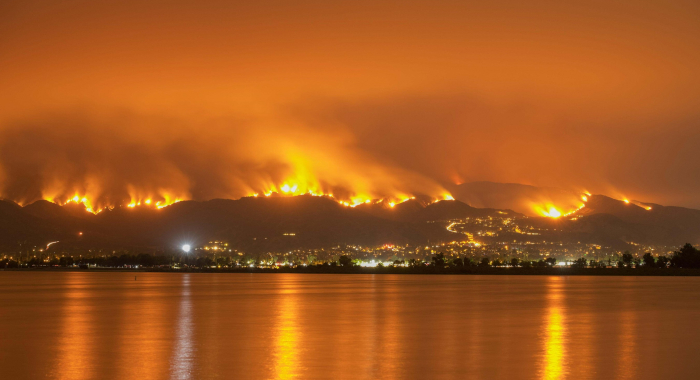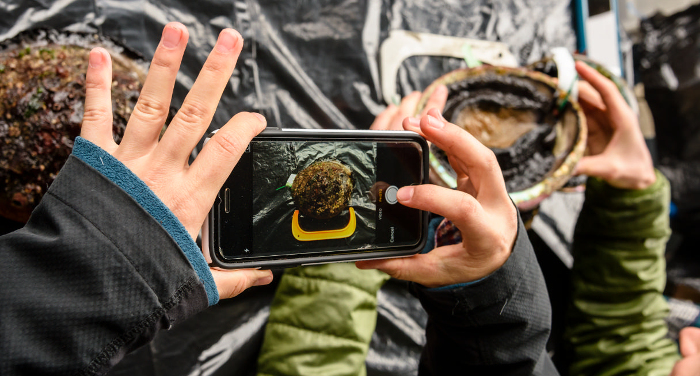Technology is enabling conservation scientists to collect and analyze data with an efficiency unimagined just decades ago. Satellite and drone-based remote sensing allow rapid mapping and monitoring of environmental conditions; networked sensors such as camera traps and flow meters provide real-time data about the health and potential threats to important resources.
Data are fundamental to making science-based conservation decisions. By modernizing environmental data capture and analysis and streamlining the delivery of usable information to decision makers, we can unlock new opportunities for transformative change in resource management.
The Conservancy’s team of designers, engineers, and data scientists are continually applying new applications of technology to increase the pace and scale of conservation in California – and beyond.


Butterfield, H.S., M. Katkowski, J. Cota, O. Sage, C. Sage, K. Easterday, D. Zeleke, L. Riege, S. Gennet, K. Lin, B. Leahy, M. Bell, M. Reynolds
Cattle grazing is the dominant land management tool TNC has to manage biodiversity and reduce the threat of catastrophic wildfire at the TNC's Jack and Laura Dangermond Preserve. This…Butterfield, H.S., M. Reynolds , M.G. Gleason, M. Merrifield, B.S. Cohen, W.N. Heady, D. Cameron, T. Rick, E. Inlander, M. Katkowski, L. Riege, J. Knapp, S. Gennet, G. Gorga, K. Lin, K. Easterday, B. Leahy, M. Bell
This Plan frames the biological and cultural significance and provides the short- and long-term goals, objectives, and priority actions for the Jack and Laura Dangermond Preserve.Christopher J. Lortie, Jenna Braun, Michael Westphal, Taylor Noble, Mario Zuliani, Emmeleia Nix, Nargol Ghazian, Malory Owen, H. Scott Butterfield
This paper evaluates how endangered species with highly restricted habitat needs and increasingly small population sizes (using blunt-nosed leopard lizard as our example), select and use available…Annalise Taylor, Tanushree Biswas, John M. Randall, Kirk Klausmeyer, Brian Cohen
In Western North America, droughts are expected to increase in frequency and intensity as the region’s climate changes. Over past decades, land managers on Santa Cruz Island, California…Laura S. Brophy, Correigh M. Greene, Van C. Hare, Brett Holycross, Andy Lanier, Walter N. Heady, Kevin O’Connor, Hiroo Imaki, Tanya Haddad, Randy Dana
The authors of this study generated new maps of current and historical tidal wetlands in 450 estuaries throughout Washington, Oregon, and California. Using laser-mapping technology known as LIDAR…Summary available in English and Spanish.
Parker SS, Randall JM, Pauly GB, Li E, Brown BV, Cohen BS
This report is a product of the Biodiversity Analysis in Los Angeles (BAILA) project. It provides details on why we conducted our analysis, how the partnership between the Museum and the Conservancy…Grace C. Wu, Emily Leslie, Douglas Allen, Oluwafemi Sawyerr, D. Richard Cameron, Erica Brand, Brian Cohen, Marcela Ochoa, Arne Olson
California has ambitious climate and energy policies that call for the development of significant amounts of new zero-carbon energy by midcentury. The Power of Place study looks at multiple pathways…Enjie Li, Sophie S. Parker, Gregory B. Pauly, John M. Randall, Brian V. Brown, Brian S. Cohen
This dataset is a product of the Biodiversity Analysis in Los Angeles (BAILA) project, and demonstrates a new way to evaluate urban biogeography—patterns in the distribution of species across…Carrie Schloss, Liz O'Donoghue
Enjie Li, Sophie S. Parker, Gregory B. Pauly, John M. Randall, Brian V. Brown, Brian S. Cohen
This paper presents a new way to evaluate urban biogeography—patterns in the distribution of species across urban areas. The authors developed a hierarchical, quantitative method for classifying…Matt Merrifield, Mary Gleason, Lyall Bellquist, Kate Kauer, Dwayne Oberhoff, Chad Burt, Steve Reinecke, Michael Bella
In 2006, The Nature Conservancy of California purchased 13 federal groundfish permits in California with the objective of managing the fishing and reporting activities in a manner that protected…Kirk Klausmeyer, Falk Schuetzenmeister, Nathaniel Rindlaub, Tanushree Biswas, Melissa M. Rohde, Jeanette Howard
94,333 unique ecosystems depend on groundwater in California. GDE Pulse lets you see how they have changed over the last 30 years. Groundwater managers and environmental stakeholders often lack…Carrie Schloss, Dick Cameron, Nathaniel Rindlaub, Connor Shank
This interactive, web-based tour provides an accessible introduction to The Nature Conservancy’s analysis of wildlife movement routes for climate adaptation in California. Viewing these pathways…Brett G. Dickson, Christine M. Albano, Ranjan Anantharaman, Paul Beier, Joe Fargione, Tabitha A. Graves, Miranda E. Gray, Kimberly R. Hall, Josh J. Lawler, Paul B. Leonard, Caitlin E. Littlefield, Meredith L. McClure, John Novembre, Carrie A. Schloss, Nathan H. Schumaker, Viral B. Shah, David M. Theobald
The authors explore the impact that Brad McRae’s development of circuit theory and the associated software, Circuitscape, have had, and continue to have, on connectivity science and…Darcy Bradley, Matt Merrifield, Karly M. Miller, Serena Lomonico, Jono R. Wilson, Mary G. Gleason
A lack of fishery data leads to uncertainty about stock status, which may compromise and threaten the economic and food security of the users dependent upon that stock and increase the…Michael F. Westphal, Taylor Noble, Harry Scott Butterfield, Christopher J. Lortie
Shrubs can play a key role in the structure of desert communities and can function as foundation species. Understanding desert shrub ecology is therefore an important task in desert conservation. In…